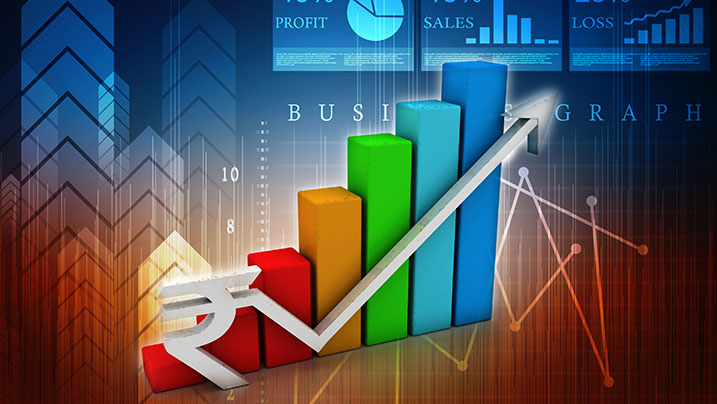CKYC Registry
-
Customer Service Contact us Service request Locate a branch
Find all the help you need
Scan the QR, get our app, and find help on your fingertips

Help CenterSupport topics, Contact us, FAQs and more
-
Login
Are you ready for an upgrade?
Login to the new experience with best features and services
-
Login
Are you ready for an upgrade?
Login to the new experience with best features and services
- Accounts
-
Deposits
IDFC FIRST Bank Deposits
View all Deposits -
Loans
IDFC FIRST Bank Loans
View all Loans - Wealth & Insure
-
Payments
IDFC FIRST Bank Payments
View all Payments -
Cards
IDFC FIRST Bank Cards
View all Cards - Blogs
- Corporate Account
-
Cash Management Services
IDFC FIRST Bank Cash Management Services
View all Cash Management Services - Supply Chain Finance
-
Corporate Lending
IDFC FIRST Bank Lending
View all -
Treasury
IDFC FIRST Bank Treasury
See more details - NBFC Financing
Support topics, Contact us, FAQs and more
- IDFC FIRST Bank Accounts
-
Savings Account
-
Corporate Salary
Account -
Senior Citizens
Savings Account -
First Power
Account -
Current Account
-
NRI Savings
Account -
TASC Institutional
Account -
Savings Account
Interest Calculator
- IDFC FIRST Bank Deposits
-
Fixed Deposit
-
Recurring Deposit
-
NRI Fixed Deposit
-
Safe Deposit Locker
-
FD Calculator
-
RD Calculator
- IDFC FIRST Bank Loans
-
Personal Loan
-
Consumer Durable
Loan -
Home Loan
-
Business Loan
-
Professional Loan
-
Education Loan
-
New Car Loan
-
Pre-owned Car Loan
-
Two Wheeler Loan
-
Pre-owned Two
Wheeler Loan -
Commercial Vehicle
Loan -
Gold Loan
-
Loan Against Property
-
Loan Against Securities
-
Easy Buy EMI card
-
Personal Loan
EMI Calculator -
Education Loan
EMI Calculator -
Home Loan
EMI Calculator -
EMI Calculator
-
Personal Loan Eligibility Calculator
- IDFC FIRST Bank Wealth & Insure
-
FIRST Select
-
FIRST Wealth
-
FIRST Private
-
Mutual Funds
-
Sovereign Gold Bond
-
Demat Account
-
Term Insurance
-
Life Insurance
-
Health Insurance
-
General Insurance
-
Bonds
-
Loan Against
Securities -
Portfolio Management
Service
- IDFC FIRST Bank Payments
-
FASTag
-
Credit Card
Bill Payments -
UPI
-
Funds Transfer
-
Forex Services
-
Pay Loan EMI
- IDFC FIRST Bank Cards
-
Ashva :
Metal Credit Card -
Mayura :
Metal Credit Card -
FIRST Millennia
Credit Card -
FIRST Classic
Credit Card -
FIRST Select
Credit Card -
FIRST Wealth
Credit Card -
FIRST WOW!
Credit Card -
Deals
-
Debit Cards
-
Co-branded Cards
-
Credit Card
EMI Calculator -
FIRST Corporate
Credit Card -
FIRST Purchase
Credit Card -
FIRST Business
Credit Card
- Premium Metal Credit Cards
-
AshvaLifestyle1% Forex₹2,999
-
MayuraLifestyleZero Forex₹5,999
-
FIRST PrivateInvite Only
- Best for travellers
-
MayuraZero ForexMetal₹5,999
-
Ashva1% ForexMetal₹2,999
-
FIRST WOW!Zero ForexTravelLifetime Free
-
FIRST SWYPTravel OffersEMI₹499
-
FIRST Select1.99% ForexLifestyleLifetime Free
-
FIRST Wealth1.5% ForexLifestyleLifetime Free
-
Club VistaraTravelLifestyle₹4,999
-
IndiGo IDFC FIRST Dual Credit CardTravelLifestyle₹4,999
- Max benefits, Free for life
-
FIRST Classic10X RewardsShoppingNever Expiring Rewards
-
FIRST Millennia10X RewardsShoppingNever Expiring Rewards
-
FIRST Select10X RewardsLifestyle1.99% Forex
-
FIRST Wealth10X RewardsLifestyle1.5% Forex
-
FIRST WOW!RewardsTravelZero Forex
-
LIC ClassicRewardsInsuranceShopping
-
LIC SelectRewardsInsuranceShopping
- Reward Multipliers
-
AshvaLifestyleMetal₹2,999
-
MayuraLifestyleZero Forex₹5,999
-
FIRST ClassicNever Expiring RewardsShoppingLifetime Free
-
FIRST MillenniaNever Expiring RewardsShoppingLifetime Free
-
FIRST SelectNever Expiring RewardsLifestyleLifetime Free
-
FIRST WealthNever Expiring RewardsLifestyleLifetime Free
- Rewards & Credit on UPI
-
FIRST Power+FuelUPI₹499
-
FIRST PowerFuelUPI₹199
-
FIRST EA₹NVirtual1% Cashback₹499
-
FIRST DigitalVirtualUPI₹199
-
IndiGo IDFC FIRST Dual Credit CardUPITravelDual cards
- Fuel and Savings
-
FIRST PowerRewardsUPI₹199
-
FIRST Power+RewardsUPI₹499
-
LIC ClassicRewardsInsuranceShopping
-
LIC SelectRewardsInsuranceShopping
- Express and Flaunt
-
AshvaMetal1% Forex₹2,999
-
MayuraMetalZero Forex₹5,999
-
FIRST SWYPEMIOfferMAX₹499
-
FIRST MillenniaRewardsShoppingLifetime Free
- FD Backed rewarding Credit Cards for all
-
FIRST EA₹NVirtualCashback₹499
-
FIRST WOW!Zero ForexTravelLifetime Free
-
CreditPro Balance TransferTransfer & SaveReduce InterestPay Smartly
- IDFC FIRST Bank NRI Forex Solutions
-
Send money to India-Wire transfer
-
Send money to India-Digitally
-
Send money abroad
-
Max Returns FD (INR)
- IDFC FIRST Bank MSME Accounts
-
Platinum Current
Account -
Gold
Current Account -
Silver Plus
Current Account -
Merchant Multiplier
Account -
Agri Multiplier
Account -
TASC Institutional
Account -
Dynamic Current
Account -
World business
Account -
First Startup
Current Account
- IDFC FIRST Bank Business Loans
-
Business Loan
-
Professional Loan
-
Loan Against Property
-
Business Loan for Women
-
Working Capital Loan
-
Construction Equipment Loan
-
Machinery Loan
-
Healthcare Equipment Loan
- IDFC FIRST Bank Business Solutions
-
Payment Solutions
-
Tax Payments
-
Doorstep Banking
-
Point of Sale (POS)
-
Escrow Accounts
-
NACH
-
Payment Gateway
-
UPI
-
Virtual Accounts
-
As per amendment in the Income Tax Rules, PAN or Aadhaar are to be mandatorily quoted for cash deposit or withdrawal aggregating to Rupees twenty lakhs or more in a FY. Please update your PAN or Aadhaar. Kindly reach out to the Bank’s contact center on 1800 10 888 or visit the nearest IDFC FIRST Bank branch for further queries.
-
-
Most Searched
Sorry!
We couldn’t find ‘’ in our website
Here is what you can do :
- Try checking the spelling and search
- Search from below suggestions instead
- Widen your search & try a more generic keyword
Suggested
Get a Credit Card
Enjoy Zero Charges on All Commonly Used Savings Account Services
Open Account Now
For the first time in seven months, Sensex has taken a plunge by 1,170.12 points, resulting in a loss of Rs. 7.86 lakh crore for equity investors. If you're wondering what caused the stock market to crash, there are multiple factors at play here. On one level, some everyday occurrences influence the market daily, such as supply and demand or investor analysis. On the other, the ongoing pandemic also affected stock prices in many minor and major ways.
Here, we elaborate on some of the factors that cause the stock market to fluctuate and understand how stocks react in different situations. This will help you stay more mindful of your investment timing and strategies while enhancing your knowledge of the stock market.
1. Basic demand and supply
The fundamental principles of economics dictate that price changes occur during a temporary discrepancy between consumers' demand and producers' supply. In terms of the stock market, demand is defined by the number of shares people want to buy, while supply is about the number of shares people are willing to sell. If the buyers are more than sellers, there's more demand. When that happens, buyers place higher bids on the stocks so that sellers would be tempted to offload. On the other hand, if there are more sellers, they bring the prices down so that buyers would be interested in initiating a purchase. This is how most stock market fluctuations take place.
2. Market indexes
It's not often that the entire stock market takes a beating. In most cases, it's the status of a market index that goes up or down. An index indicates the performance of a particular sector in the market. This performance is one of the more straightforward ways of assessing the overall health of the stock market. Suppose a particular industry is doing exceedingly well (such as the healthcare sector after COVID-19 struck). In that case, financial firms use this index as a guide to creating index funds and exchange-traded funds (ETFs). Indexes are typically grouped based on industry, like tech or education.
3. Profitability of Companies
This is one of the most significant causes of stock market fluctuations. If the financial health of a company deteriorates, it makes sense that its share price would be impacted negatively. There are two company-level indicators that affect the stock market's movements — earning per share and price-earning ratio. When both are on the rise, it results in increased prices of stocks, which causes an upward trend in the market as a whole.
Profit is the ultimate goal of every company. From revenue potential and management abilities to cost management, many factors influence this goal. When you invest in a company, and it turns a profit, the share prices will likely increase, and vice versa.
4. Media reports
Investors, especially new ones, can be heavily influenced by things like market sentiment. During critical financial announcements that indicate a change in the status quo, the market can have an immediate and volatile reaction as compared to news directly impacting investors' interests. However, that doesn't mean the market does not react to such information at all. When there is news of upcoming political elections or an impending natural disaster, stock market fluctuations are relatively commonplace. As an investor, you must learn how to filter these reports and make informed decisions regarding a stock. For instance, if you hear something that you believe will change a company's ability to stay on top or generate cash flows in the future, you might want to pay attention to that news.
5. Worldwide events
Some occurrences around the world can also have a direct and indirect impact on stock prices. It's easy to understand this after the havoc wreaked by the COVID-19 pandemic, which led to significant stock market fluctuations as witnessed in 2020 and 2021. The most recent dip in prices has been attributed to various factors, including but not limited to COVID lockdowns, inflation, falling oil prices, and so on. Geopolitical and microeconomic factors have a considerable impact on how a specific stock or market index performs. Investors need to analyse, assess, and understand these factors to make more educated decisions for their investments.
6. Market trends
Stock market fluctuations can be classified into two trends or phases: the bull and the bear phase. The bull phase is a trend wherein investors are confident about the future of the market as well as the economy at large. This entices them to purchase more stocks, leading to an increase in overall demand and prices. On the other hand, the bear phase implies that investors are concerned about the market's future and would rather sell than buy. This results in stock prices falling across many or sometimes all sectors.
Every fluctuation in the stock market is unique. It is influenced by a variety of factors and can last either a short time (a few days) or longer (a few months). Once you start reading more about the market, you can make better decisions and become a more confident investor. The bottom line here is that you need meticulous research to navigate equity investments that come with high-risk potential in addition to your instincts and intuition. Looking at a stock's recent and historical performance and remaining aware of current events are crucial aspects of investing.
Disclaimer
The contents of this article/infographic/picture/video are meant solely for information purposes. The contents are generic in nature and for informational purposes only. It is not a substitute for specific advice in your own circumstances. The information is subject to updation, completion, revision, verification and amendment and the same may change materially. The information is not intended for distribution or use by any person in any jurisdiction where such distribution or use would be contrary to law or regulation or would subject IDFC FIRST Bank or its affiliates to any licensing or registration requirements. IDFC FIRST Bank shall not be responsible for any direct/indirect loss or liability incurred by the reader for taking any financial decisions based on the contents and information mentioned. Please consult your financial advisor before making any financial decision.
The features, benefits and offers mentioned in the article are applicable as on the day of publication of this blog and is subject to change without notice. The contents herein are also subject to other product specific terms and conditions and any third party terms and conditions, as applicable. Please refer our website www.idfcfirstbank.com for latest updates.























